University Health Program: HSE103 Six-Week Cardiovascular Fitness Plan
VerifiedAdded on 2022/10/10
|6
|935
|345
Project
AI Summary
This document details a six-week cardiorespiratory fitness program designed for Stephanie Jackson, based on a health assessment and baseline testing results. The program incorporates health appraisal data, body composition data, and cardiorespiratory assessment data. The program includes a warm-up, conditioning exercises (shoulder press, chest fly, bench triceps extension, seated bicep curls), cool-down stretches, resistance training (wall plank, bench push-ups, supported squats), and a combination of walking, power walking, jogging, and running. It also provides guidelines on frequency, duration, and intensity of exercise. The program aims to improve cardiovascular fitness while maintaining a healthy body composition. The document also references relevant literature, including research on the effects of exercise on cardiovascular health and muscle strengthening. The program adheres to guidelines from the American College of Sports Medicine (ACSM) and emphasizes the importance of aerobic exercise for overall health. The assessment also considers the client's medical history, lifestyle, and risk factors to tailor the program appropriately.
1 out of 6
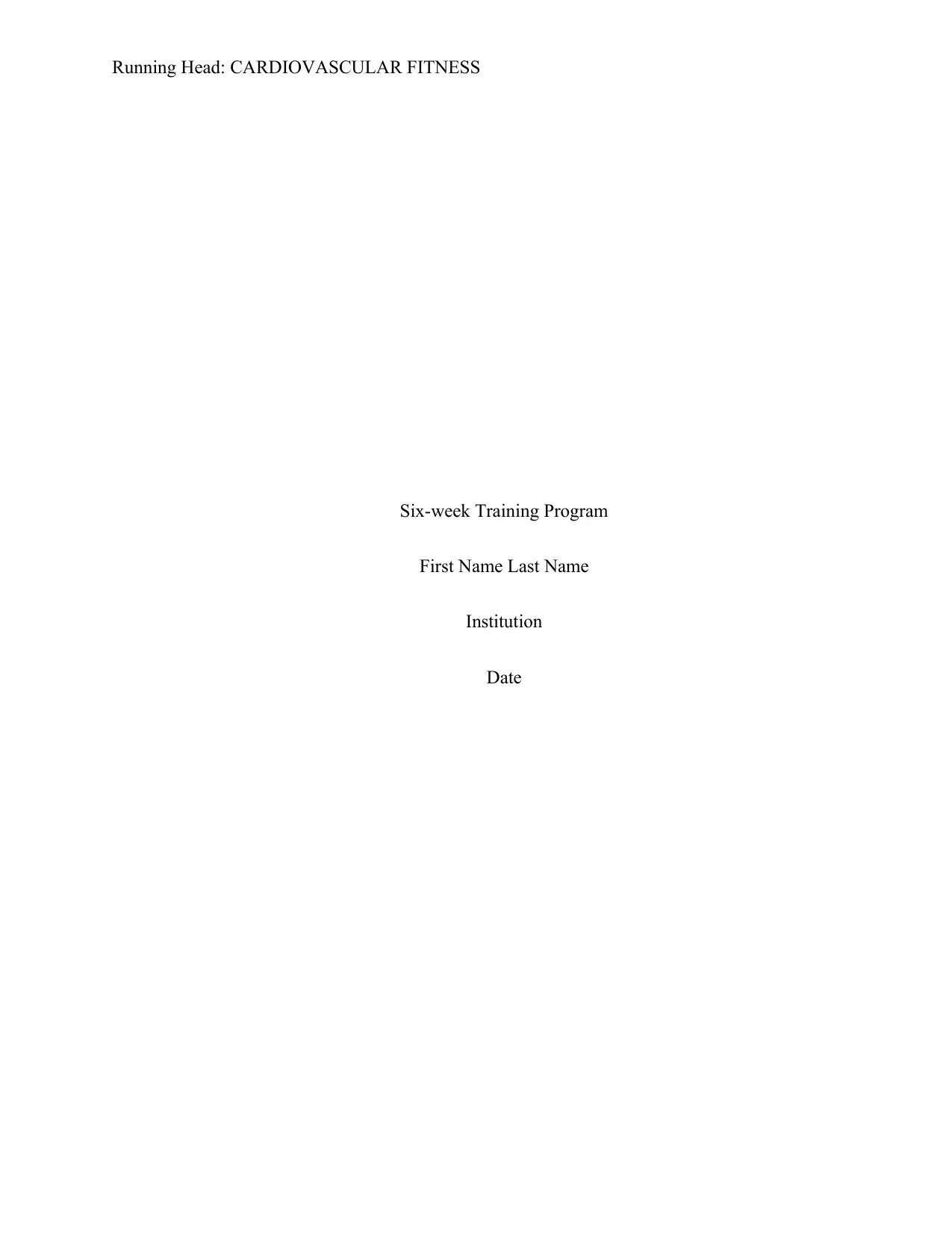
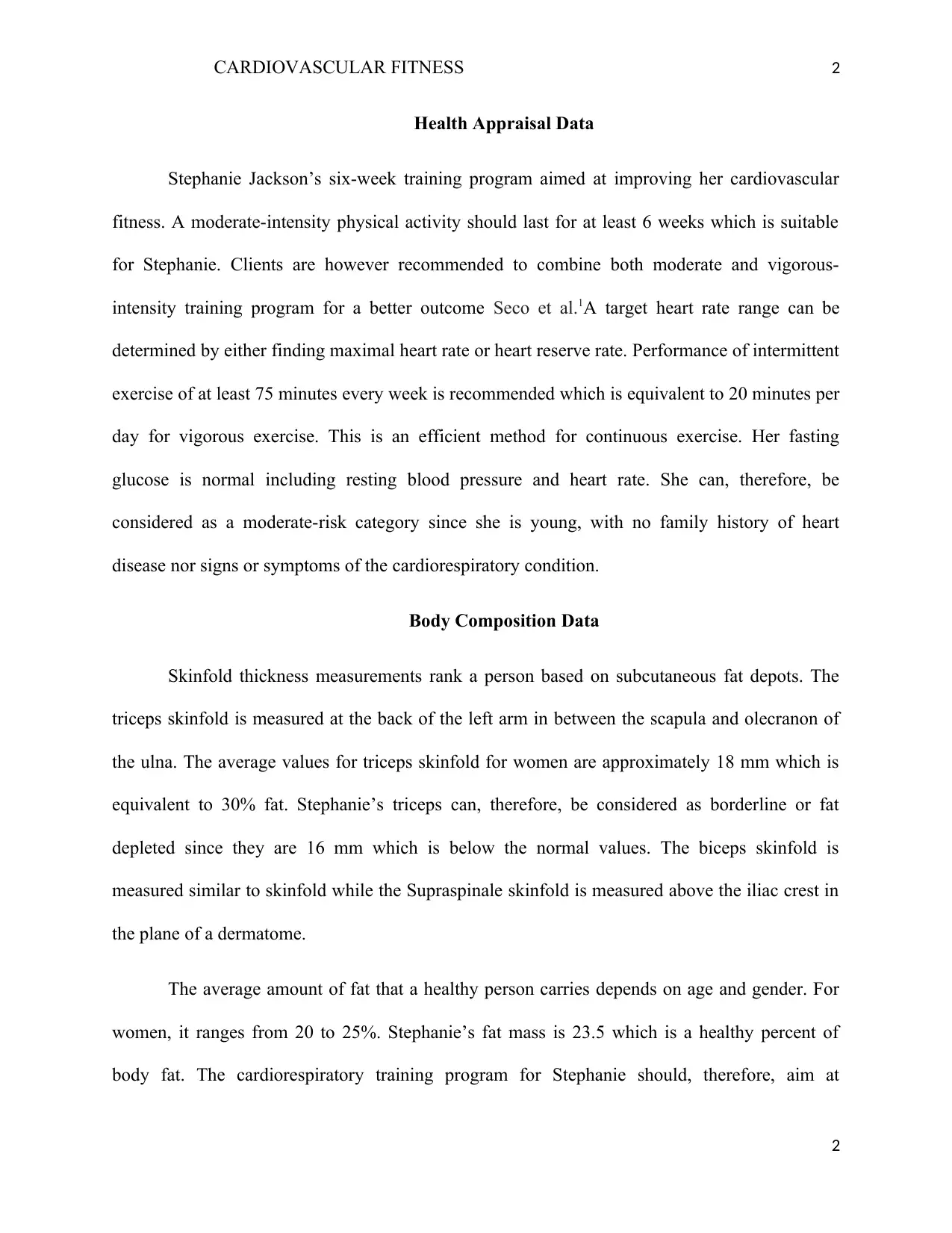
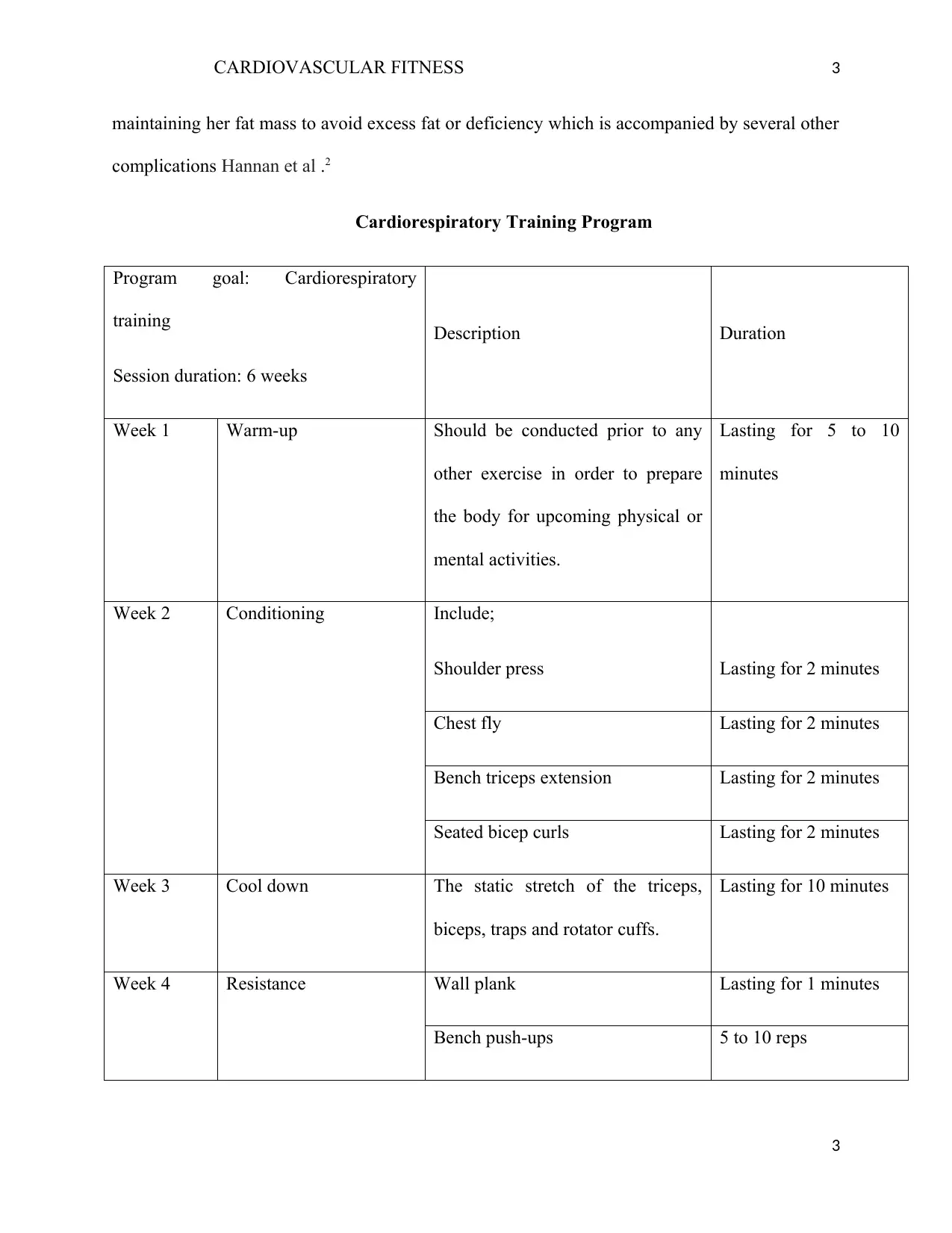

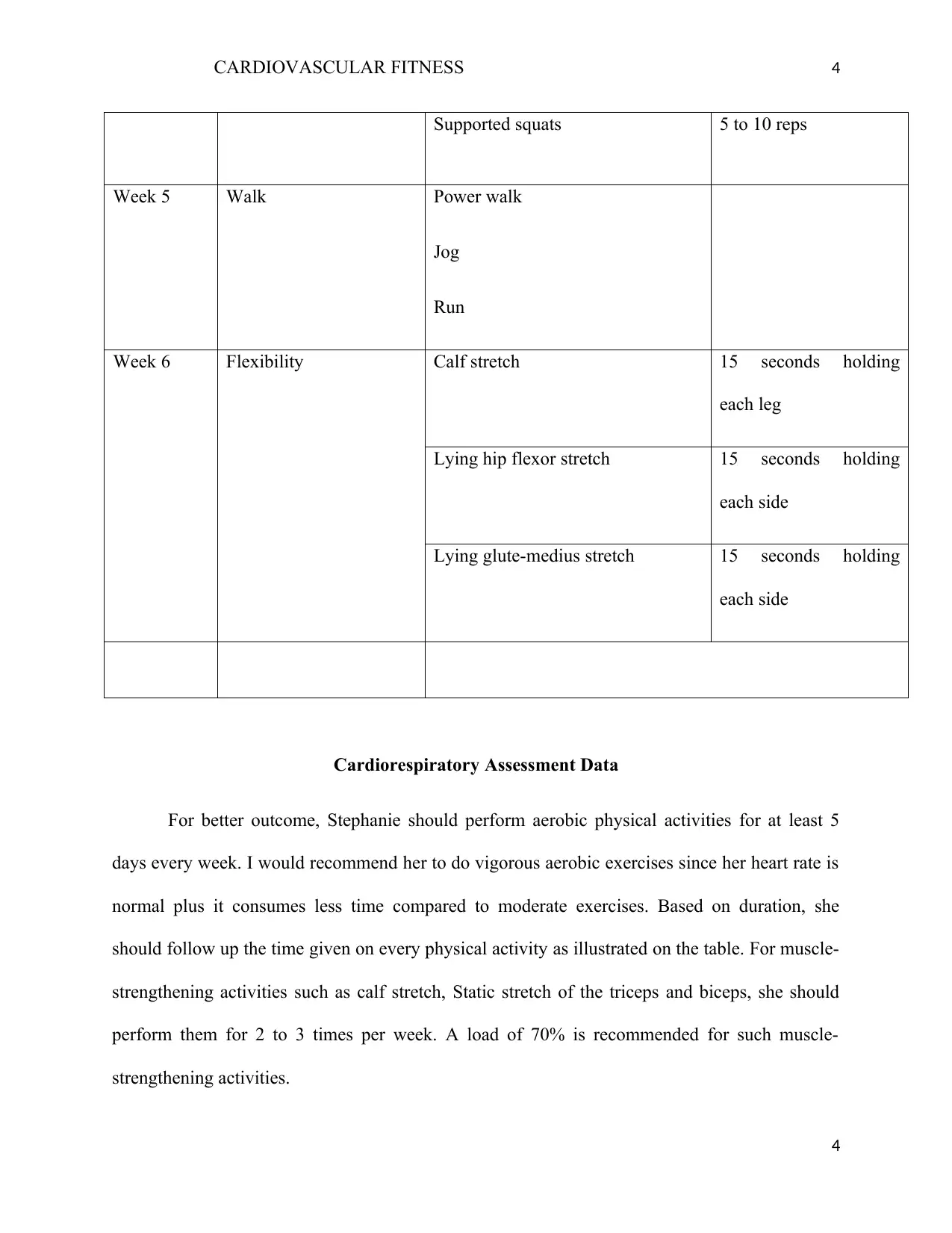
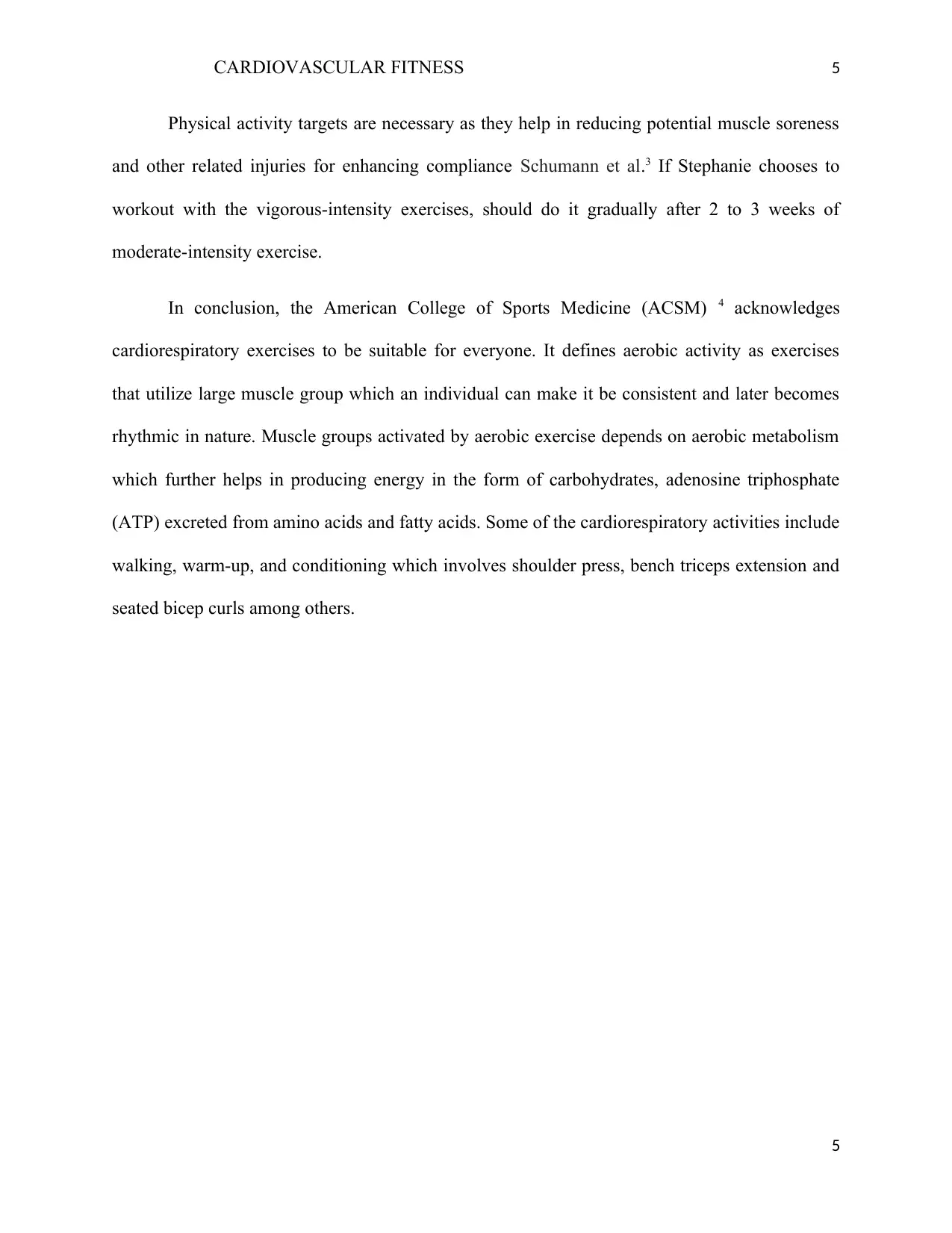
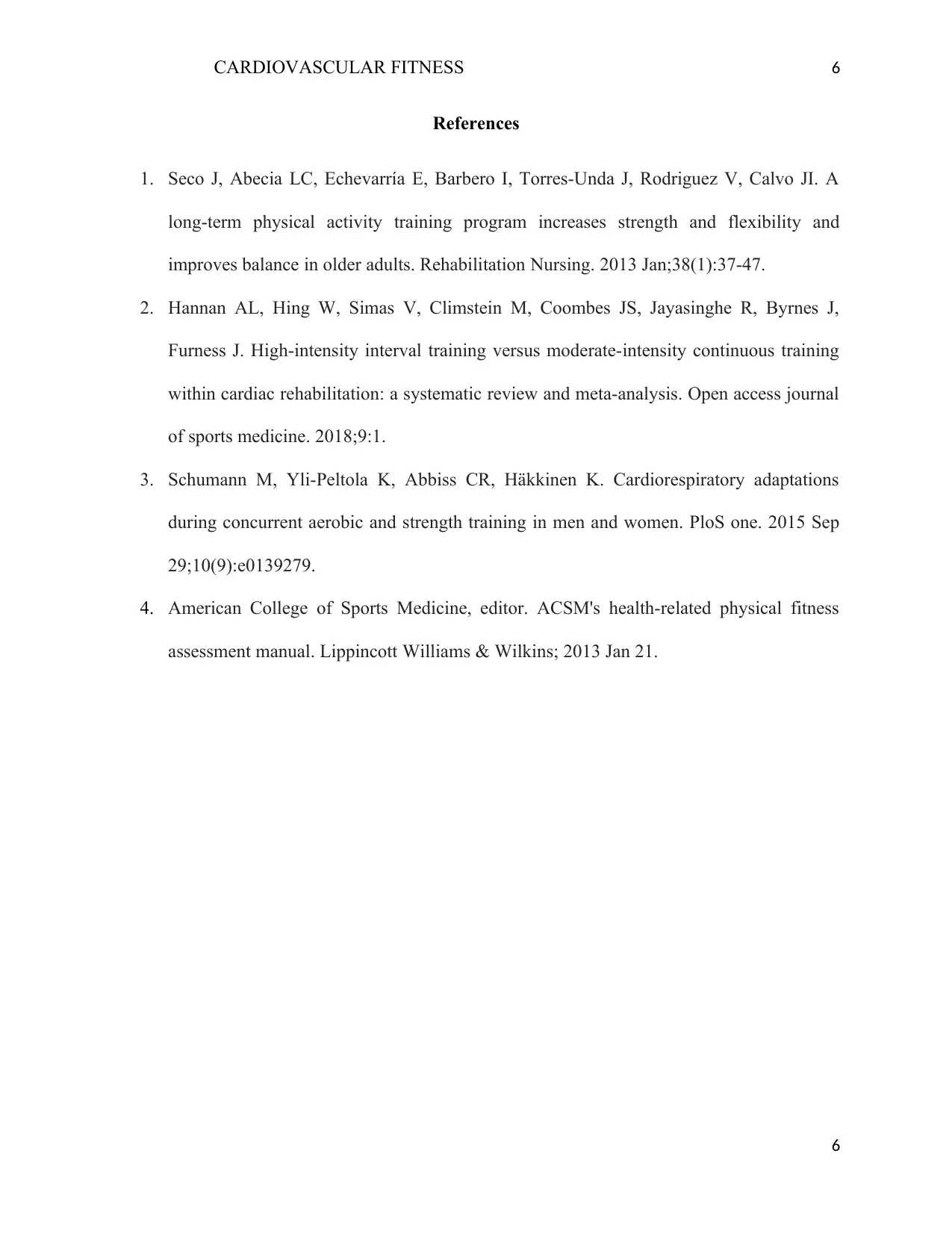





![[object Object]](/_next/static/media/star-bottom.7253800d.svg)